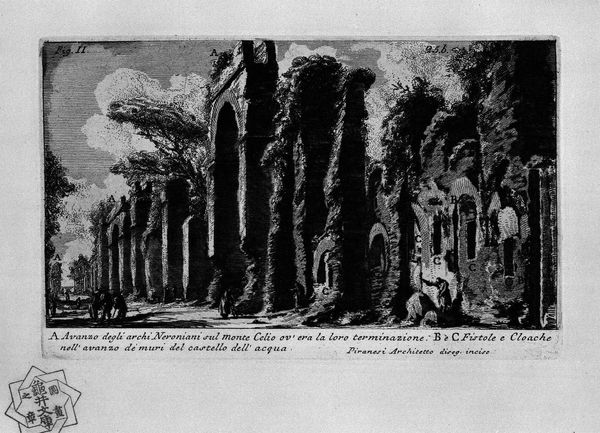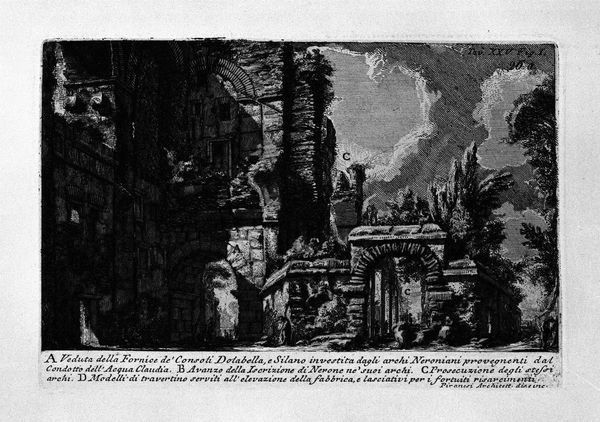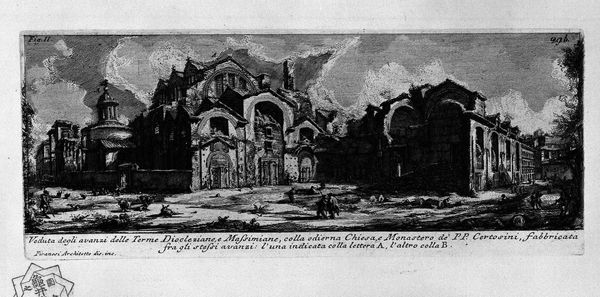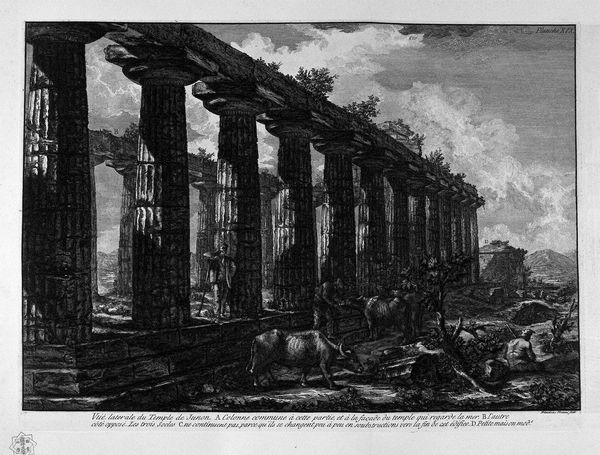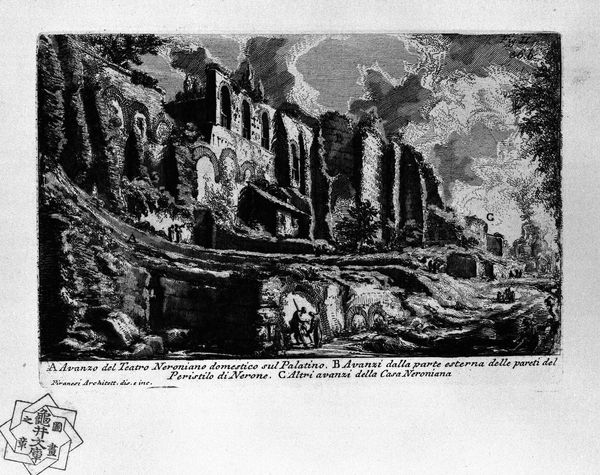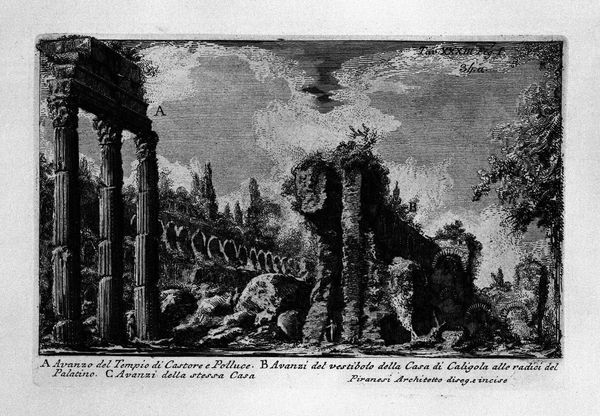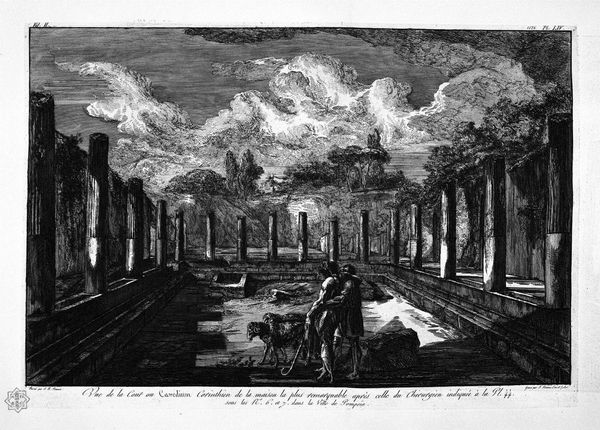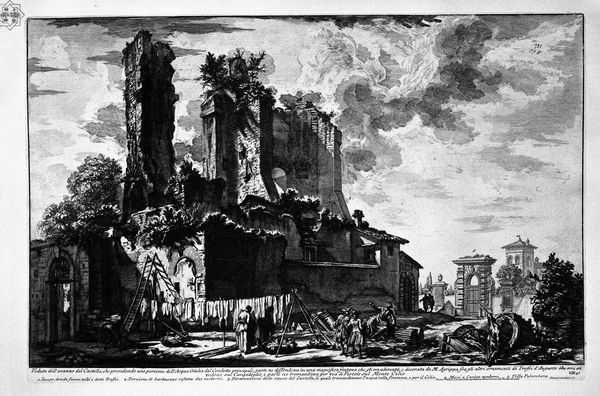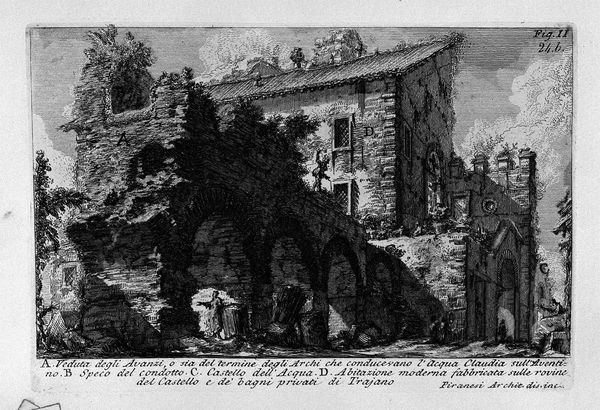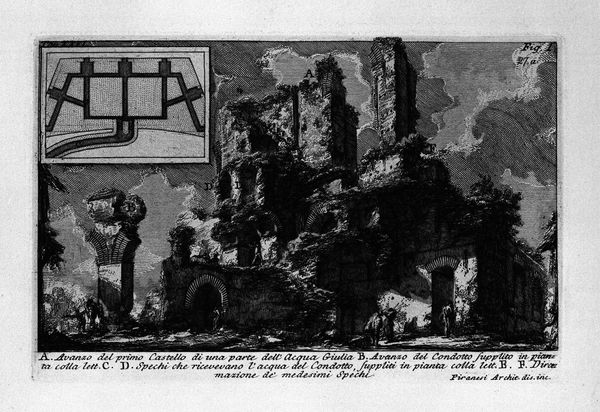
The Roman antiquities, t. 1, Plate XXIV. Celio o Oppio. The Seven Halls. Baths of Trajan. 1756
0:00
0:00
print, etching, engraving, architecture
# print
#
etching
#
landscape
#
romanesque
#
line
#
history-painting
#
engraving
#
architecture
Copyright: Public domain
Editor: We're looking at Giovanni Battista Piranesi's "The Roman Antiquities, t. 1, Plate XXIV. Celio o Oppio. The Seven Halls. Baths of Trajan" from 1756, an etching and engraving of Roman ruins. I'm struck by the contrast between the massive, decaying architecture and the tiny figures walking amongst it. What speaks to you in this work? Curator: Well, looking at Piranesi's work, I see an artist grappling with materiality and the processes of empire. This isn't just a pretty landscape; it's a study of labor and consumption. The sheer scale of the ruins suggests immense human effort—the quarrying, the transport, the construction. Then, the forces of nature and time degrade it all. Think about the social context! What kinds of labor practices were involved in creating these massive structures? Editor: So you're saying the focus should be on how the Romans actually built these things? Curator: Exactly! Consider the economic and social implications of obtaining these resources and maintaining such infrastructure. Where did the stone come from? Who were the laborers? How does the printmaking process itself – the etching, the engraving – mirror those earlier industrial processes? And ultimately, what did the process of dismantling and decay involve? Were materials reclaimed? What's consumed and what's repurposed? Editor: That’s a completely different way of viewing it. I was mostly thinking about aesthetics and composition. Curator: That's the traditional approach, but I want to get people thinking about the means of production behind these images, behind all art. The materiality shapes the message. Editor: I see your point. By considering the materials and processes, we can gain a deeper understanding of the society that created and consumed this artwork. Curator: Indeed. Thinking materially shifts our attention to the very foundations upon which empires, and artistic representations of them, are built.
Comments
No comments
Be the first to comment and join the conversation on the ultimate creative platform.
